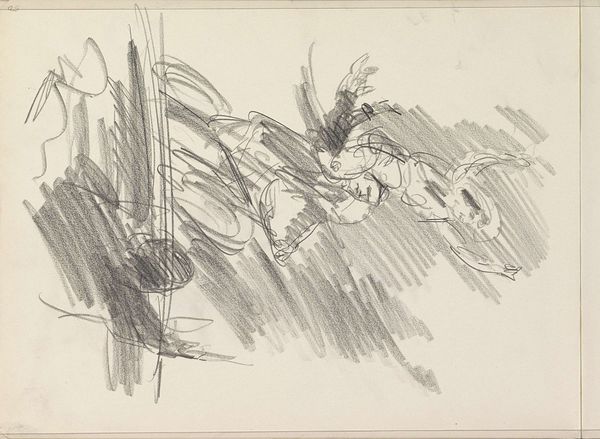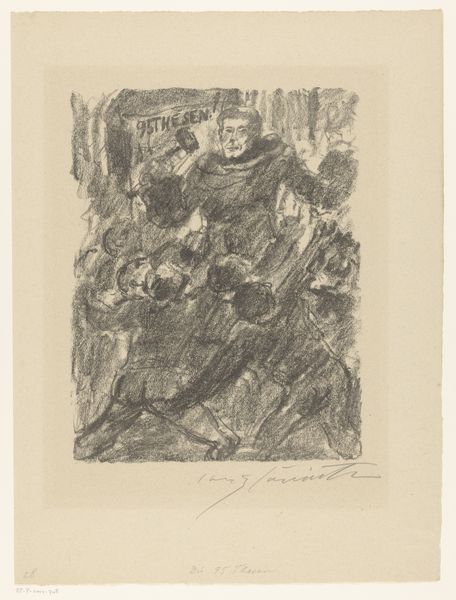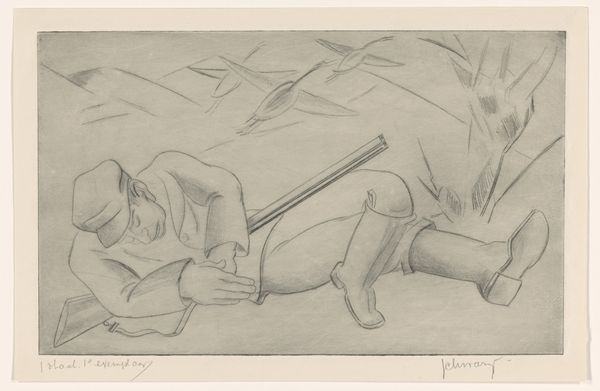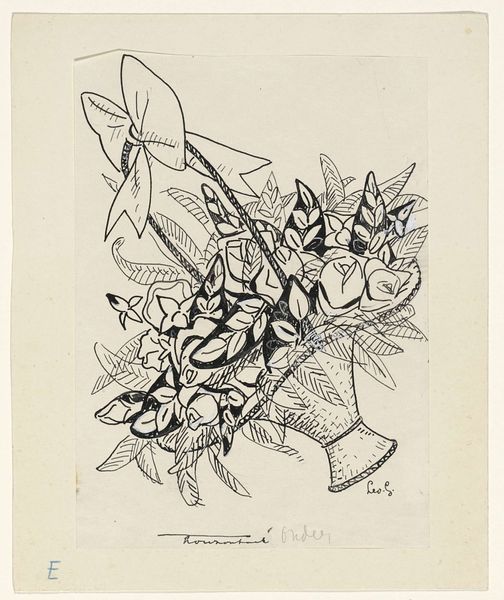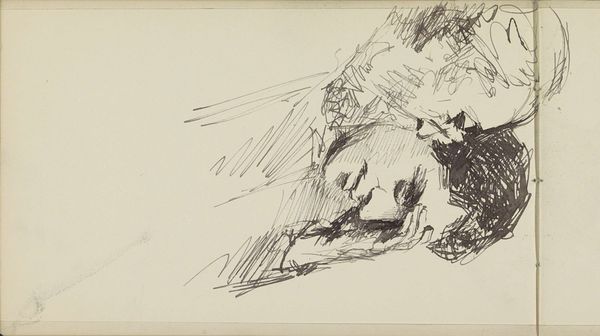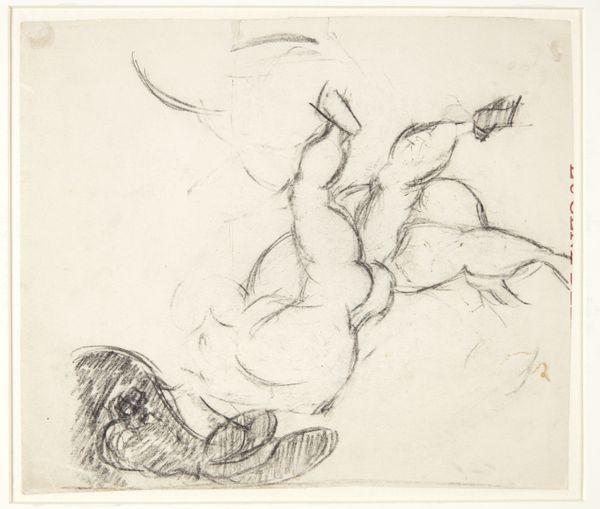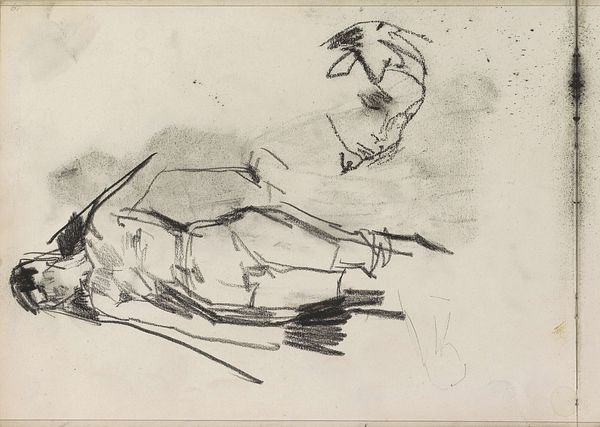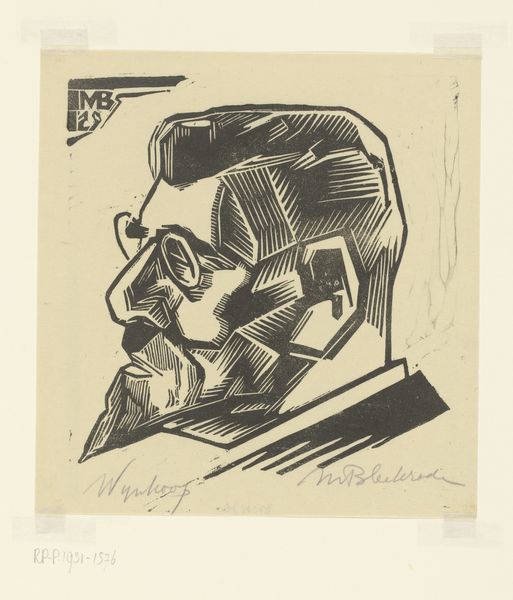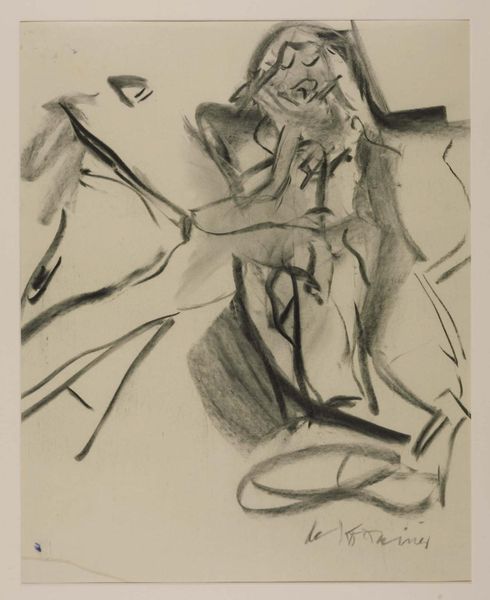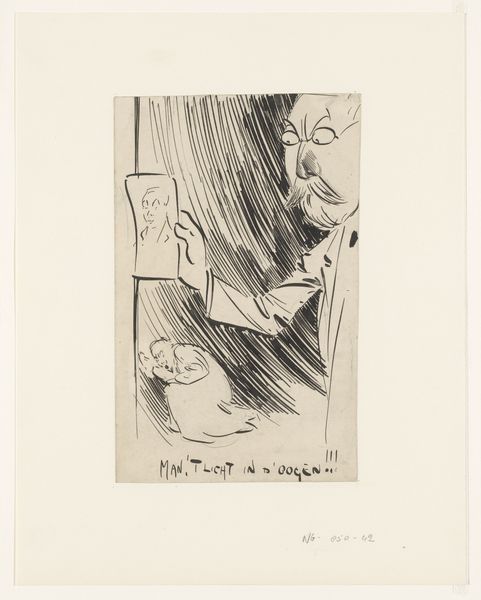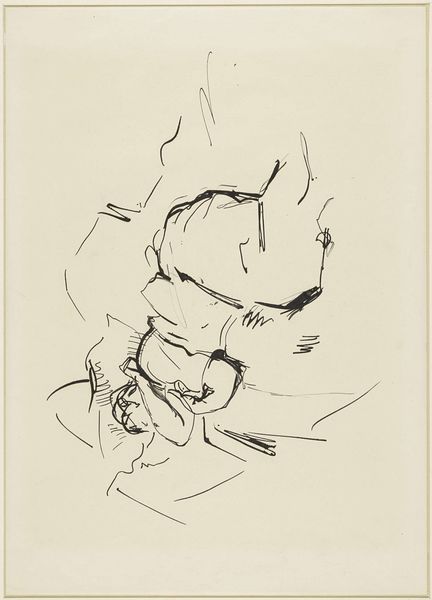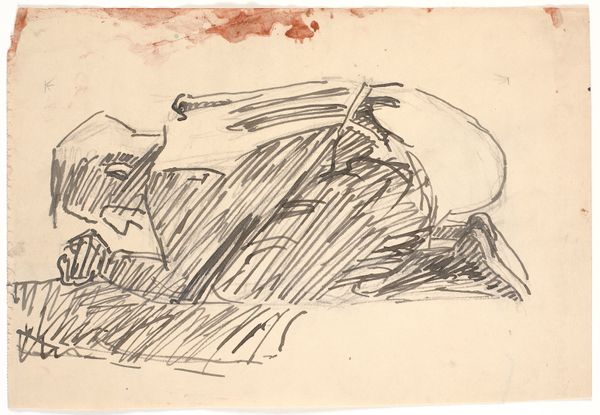
Dimensions: height 295 mm, width 383 mm
Copyright: Rijks Museum: Open Domain
Editor: This ink drawing by Umberto Boccioni, titled *Untitled (Schnelligkeit) (Speed)*, dates between 1914 and 1922. The lines are so dynamic and chaotic! It really does convey a sense of frenetic movement. How do you interpret Boccioni's vision of speed in this piece? Curator: The brilliance of Boccioni's work lies in its engagement with the burgeoning machine age and the Futurist movement's glorification of speed, technology, and modern life. This piece is less about representing a specific object in motion and more about capturing the *sensation* of speed, right? Consider how traditional artistic academies valued static beauty; Futurists aimed to dismantle those values. Do you see any indication that the bicycle represented a shift in cultural values, promising progress but also potentially social fragmentation? Editor: I see that, particularly how he breaks down the figure into almost abstract forms. It’s like he's showing us not just the bike and rider, but the blur they leave behind, embracing movement as part of the aesthetic experience. Did this perspective challenge artistic norms, or how did the public receive the work? Curator: Absolutely! Public reaction to Futurist art was mixed, often confrontational. On one hand, critics were perplexed by this deliberate abandonment of realism. Yet, simultaneously, the bold dynamism and rebellious spirit resonated with a segment of society that was eager to break free from tradition. This work challenged conventional art spaces, advocating for art that engaged directly with the energy of the streets and the pace of the modern world. What aspects of Futurism continue to influence artists today, do you think? Editor: Thinking about it now, that desire to represent unseen forces or ideas feels relevant to digital art and media. It really broadens my understanding of how art reflects society's changing values and anxieties. Curator: Indeed. By considering its historical context, this seemingly abstract drawing offers valuable insight into the societal shifts that Boccioni was experiencing at the time. It definitely inspires you to rethink the role of the artwork!
Comments
rijksmuseum about 2 years ago
⋮
With his art the Italian Futurist Umberto Boccioni above all wanted to express movement. He tried to capture the transmission of light and sound as well as the power and motion of machines and the speed of all modern life. His motorcyclist is first and foremost about dynamism: not only of the vehicle, but also of the environment which is constantly in motion.
Join the conversation
Join millions of artists and users on Artera today and experience the ultimate creative platform.
